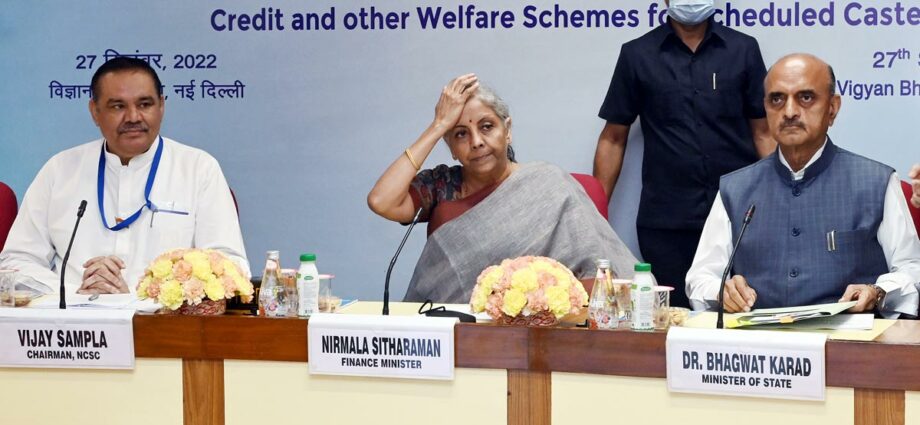Every patriot should learn from our history and recognise that celebrating size will neither negate nor obscure the huge economic challenges that India faces, asserts Rathin Roy.
Two interesting things have happened almost simultaneously in the past year.
Bangladesh’s per capita income overtook that of India and, more recently, India has overtaken the United Kingdom to become the fifth largest economy in the world.
This juxtaposition underscores two things. First, the link between size and prosperity is tenuous, even if we ignore economic inequality.
Bangladesh as a country is much poorer than India, but its citizens are richer.
Because of economic size, India is a member of the G20.
But its citizens are the poorest in the G20.
The citizens of Indonesia, the next poorest, have a per capita income that is 150 per cent greater than India’s, but its economy is only a third of India’s in size.
The citizens of the United Kingdom, with a per capita income of over $43,000, are the fourth richest in the G20.
They can save and/or consume 23 times more than Indian citizens.
Of course, size matters. A country can punch well above its weight in projection of economic power, the larger its aggregate gross domestic product (GDP).
India is able to afford an extremely large military because its aggregate GDP allows it to.
India’s collective ability to invest at scale is also significantly enhanced by its large GDP.
India’s economic autonomy, its ability to rely on domestic resource mobilisation, and to craft independent trade and economic policies are empowered by increasing economic size.
But when it comes to increasing prosperity, this is not the case, and this has ramifications.
India’s personal income tax kicks in at Rs 250,000 per annum and that at a token rate of 5 per cent The standard rate of 20 per cent (a very low rate by G20 standards) kicks in at Rs 500,000, which is more than three times the per capita income.
In contrast, in the UK, the 20 per cent rate kicks in at one third the per capita income.
Thus, the Government of India has to borrow to fund a substantial proportion of its current expenditure, unlike the UK.
Taxation cannot fully fund it by a long shot because the typical (or even the slightly prosperous) citizen — one earning the per capita income — cannot be taxed at these low income levels.
So despite being the fifth largest economy in the world, India’s ability to fund health, education, and public services is severely constrained by low individual prosperity.
A large aggregate GDP and a low per capita GDP poses other difficult policy conundrums.
India’s share in the global market is just 3.5 per cent despite its being the fifth largest economy.
But India is also the fifth largest consumer market with household final consumption expenditure of $2 trillion.
This is roughly the same size as the German market.
But per capita consumption expenditure of an Indian is just $1,500 compared with $24,000 of the average German.
So the average Indian consumer has only 1/14th of the purchasing power of the average German.
Only the top 5 per cent of Indians can conceivably consume the same things as the average German, and they will provide a larger market, the greater is their purchasing power compared to the average. And so it is.
The top 10 per cent of Indian households account for 33 per cent of total income.
In Germany it is 25 per cent. So for India to be an attractive consumer market for inward investment, it has to maintain an ‘inequality edge’ over other G20 countries.
This also explains why the bulk of India’s consumption is sourced from the informal sector.
Despite the large size of GDP, the low levels of per capita income cannot sustain consumption of goods and services at global standards.
If one were to consume tea and samosas at a (non-subsidised) formal establishment, this would be a treat for anyone not in the top 10 per cent of the population.
But to consume this in an informal establishment is affordable.
This structural pattern of demand self-limits the prosperity that expanding economic size delivers to India.
The fifth largest economy is also regionally disparate.
The disparities have only exacerbated as India has grown from being the 11th to the fifth biggest economy in the world.
The per capita GSDP of Uttar Pradesh is less than $1,000, poorer than Nepal or Tanzania, while that of Tamil Nadu is $3,000.
The former exports both labour and capital to richer states.
The workers are temporary migrants — there is no gravitational permanent migration of households at any scale from poorer to richer regions.
On top of this, poorer regions export capital to richer regions.
The credit deposit ratio of Tamil Nadu is 1.19 while that of UP is 0.48.
Twenty-nine per cent of UP’s population is classified as poor as opposed to just 4 per cent in Tamil Nadu.
Tamil Nadu is a high human development state with an index value of 0.71, the same as South Africa, or Egypt, while UP, at 0.59, is worse than Nepal.
It is not my intention to rain on anyone’s nationalist parade.
India at 75 is undoubtedly in a better and stronger economic position than India at 25 or 50, and that is how it should be.
But every patriot should learn from our history and recognise that celebrating size will neither negate nor obscure the huge economic challenges that India faces.
I’ve illustrated how some of these challenges emerge from being a country with a large aggregate income but low individual income.
These can be overcome, but they must be recognised and addressed rather than ignored by creating a wall of hype about the inevitability of a golden future.
Rathin Roy is managing director, ODI, London.
Feature Presentation: Aslam Hunani/Rediff.com
Source: Read Full Article


